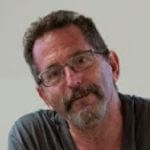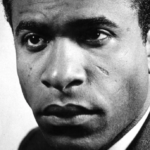Summary: August 2 march succeeds in a rare shutdown of Lake Shore Drive, as protestors from South Side bring grievances of the Black community into the affluent North Side, garnering national attention — Editors
In recent years, Chicago has become a touchstone in the public imagination of the United States as justice movements force the conversation on gun violence, police brutality, and white supremacy. Corporate media offers fetishized images of urban decay and racialized violence; Trump threatens martial law; while Spike Lee presents fantastical comparisons to international victims of US imperialism in his film “Chi-Raq.”
In this apartheid city, however, images depicting the urgent reality of state violence are often eerily absent from leisurely and affluent districts on the North side. This discrepancy is precisely what South Side organizers wanted to interrupt during the March to Shut Down Lake Shore Drive on August 2, 2018. The banner referring to Mayor Rahm Emmanuel, “#ResignRahm: End the Tale of Two Cities. Justice for ALL Chicagoans!” captured well the mood of those who were present to demand justice.
The march, organized in part by Reverend Gregory Livingston, aimed to shut down Lake Shore drive, the main thoroughfare in North side, and then proceed to Wrigley Field where the Chicago Cubs baseball team was set to play a home game. The Chicago music festival Lollapalooza was beginning as well that evening, adding complications to the already disruptive rush hour shutdown.
This protest carried momentum from others against the Chicago police department’s recent murder of Harith Augustus on July 14, including a similar protest that shut down Chicago’s Dan Ryan expressway. Leading up to the August 2 protest, organizers caused some stir by hinting that they might enter Wrigley Field as well.
At around 4 pm, a multiracial crowd of about 200 had congregated near the highway. About a third of those present came by bus to the North Side for the protest. While at first there wasn’t a lot of communication between the organizers and the crowd, the protesters moved forward—after a brief rally— to successfully block Lake Shore Drive for about 30 minutes without incident.
This accomplishment was somewhat surprising, as the protesters were far outnumbered by the police. But this is election time in Chicago, and it may be that Rahm Emanuel doesn’t want to add to the negative publicity he already faces when it comes to the crimes he has committed against the Black community.
From there, the march progressed to Wrigley Field, inspiring a number of people witnessing it to join in. There were moments of conversation and argument along the way as some refused to be rushed along quickly, preferring to take the time necessary to for residents in the area to better understand the reasons why protesters were present.
As the march approached the stadium, the energy, volume, and speed of the group picked up. Protesters quickened their pace, clapped in time, and chanted, calling for Rahm Emanuel to resign. Upon arriving at the stadium, there was a contemplative moment as the protesters gazed up at rows of blue-clad Cubs fans already waiting inside, two hours prior to the opening pitch. Those inside the stadium peered downward from the high, solid walls, past a police line, and into the crowd. Though there was at least some talk of trying to “crash” Wrigley, the rally broke up after a few hours.
This moment should give the movement pause to think through the proposed goal of the march: to “redistribute the pain.” Movements are increasingly calling attention to the causal links between poverty and wealth, deprivation and decadence. Chicago is comprised of two cities precisely because the logic of racial capitalism depends on exploitation and oppression in order to generate surplus and leisure.
In 2013, when Rahm closed 50 Chicago Public Schools, 6 of them were in the West Side neighborhood of West Garfield Park alone, the proposed site of a police training facility that would cost $95 million. The rulers of our world and city are clear: any idea of public good—much less a commons—is discarded; dissenting voices are undemocratically squelched; and what amounts to an internal military occupation is deployed to contain what elites see as a surplus population.
But everywhere, the people that capitalism has consigned to immiseration are rising up and fighting back. Their defiance, while rarely represented honestly in portrayals of violence in Chicago, will be the only force sufficiently strong enough to end it. The subdued moment of mutual contemplation between protesters and Cubs fans portends to questions our movement will face moving forward: Can we develop the coalitional unity desperately needed to confront elites and the logic of capital? How might we redistribute not only our pain, but also our society’s wealth so that everyone has everything they need? How too, can we share our solidarity and mutual care for one another in order to construct a society of real freedom and true equality? The answers reside not in the fleeting words and images of violence that flash upon our screens but in the humanizing relationships we build in our struggle for liberation.







0 Comments